Adopting Nature’s Wisdom – Biomimicry
Angie Kellen, Director, Client Services, Open Sky Communications
 I’ve always been fascinated at mankind’s ability to take the best of nature and adopt it to our advantage. What I’m referring to is biomimicry. There are many examples, but one that is well known involves Swiss engineer Georges de Mestral. In 1941, he was walking his dog and noticed that it had cockleburs stuck all over its fur. Cockleburs have a hook and fasten system that is used to transport and enable the plant to disperse to a wider geographical area by attaching itself to the fur of a passing animal or human. This eventually led to the invention of Velcro. And we know the many advantages Velcro provides in our lives. It seems to be a smart move and time saver to observe what nature has perfected over millions of years and find ways to use these evolutions to help humankind. But what if we used artificial intelligence (AI) to help speed the process to uncover new advantages? How many more discoveries could we make? That will be the focus of Part 2 of this blog, ‘Biomimicry and AI’. For now, I will highlight some interesting biomimicry examples, which will set the stage for Part 2.
I’ve always been fascinated at mankind’s ability to take the best of nature and adopt it to our advantage. What I’m referring to is biomimicry. There are many examples, but one that is well known involves Swiss engineer Georges de Mestral. In 1941, he was walking his dog and noticed that it had cockleburs stuck all over its fur. Cockleburs have a hook and fasten system that is used to transport and enable the plant to disperse to a wider geographical area by attaching itself to the fur of a passing animal or human. This eventually led to the invention of Velcro. And we know the many advantages Velcro provides in our lives. It seems to be a smart move and time saver to observe what nature has perfected over millions of years and find ways to use these evolutions to help humankind. But what if we used artificial intelligence (AI) to help speed the process to uncover new advantages? How many more discoveries could we make? That will be the focus of Part 2 of this blog, ‘Biomimicry and AI’. For now, I will highlight some interesting biomimicry examples, which will set the stage for Part 2.
Sharkskin-inspired swimsuits
You may remember that sharkskin-inspired swimsuits had a lot of media attention. Michael Phelps wore one for all of his events during the 2008 Summer Olympics.
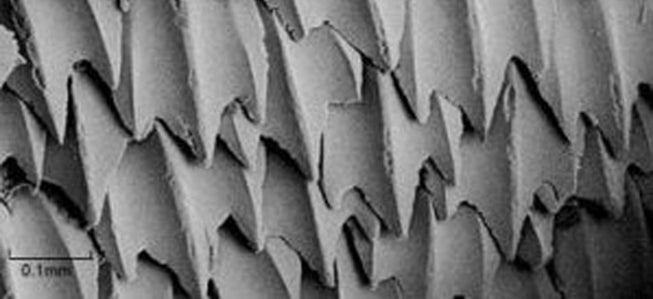 If you were to look under an electron microscope, sharkskin is made up of countless overlapping scales called dermal denticles. Denticles are similar to scales, but they are actually just modified teeth and are covered with hard enamel. The denticles have grooves running down their length, which aligns with water flow helping to make water pass by faster. The denticles create a low-pressure zone, referred to as a leading-edge vortex, as the water moves over the skin. This low-pressure area is actually sucking the shark forward. The denticles enhance this leading-edge vortex. The denticles that make up sharkskin reduce turbulence and drag, but it is also believed that they enhance thrust. This results in the shark swimming faster and silently. The rough shape also wards off parasitic growth such as algae and barnacles.
If you were to look under an electron microscope, sharkskin is made up of countless overlapping scales called dermal denticles. Denticles are similar to scales, but they are actually just modified teeth and are covered with hard enamel. The denticles have grooves running down their length, which aligns with water flow helping to make water pass by faster. The denticles create a low-pressure zone, referred to as a leading-edge vortex, as the water moves over the skin. This low-pressure area is actually sucking the shark forward. The denticles enhance this leading-edge vortex. The denticles that make up sharkskin reduce turbulence and drag, but it is also believed that they enhance thrust. This results in the shark swimming faster and silently. The rough shape also wards off parasitic growth such as algae and barnacles.
Today, scientists have created dermal denticles in swimsuits (these are currently banned in major competitions) and on the bottom of boats. The cargo ship industry is very focused on efficiency, and hulls made with dermal denticle-type shapes helps them burn less oil and reduces the need to use chemicals to clean the hulls. Since bacteria can’t hang on to the rough surface of the denticles, scientists are looking to apply this technique to create surfaces in hospitals that can resist bacteria growth.
Bird-inspired Bullet Train
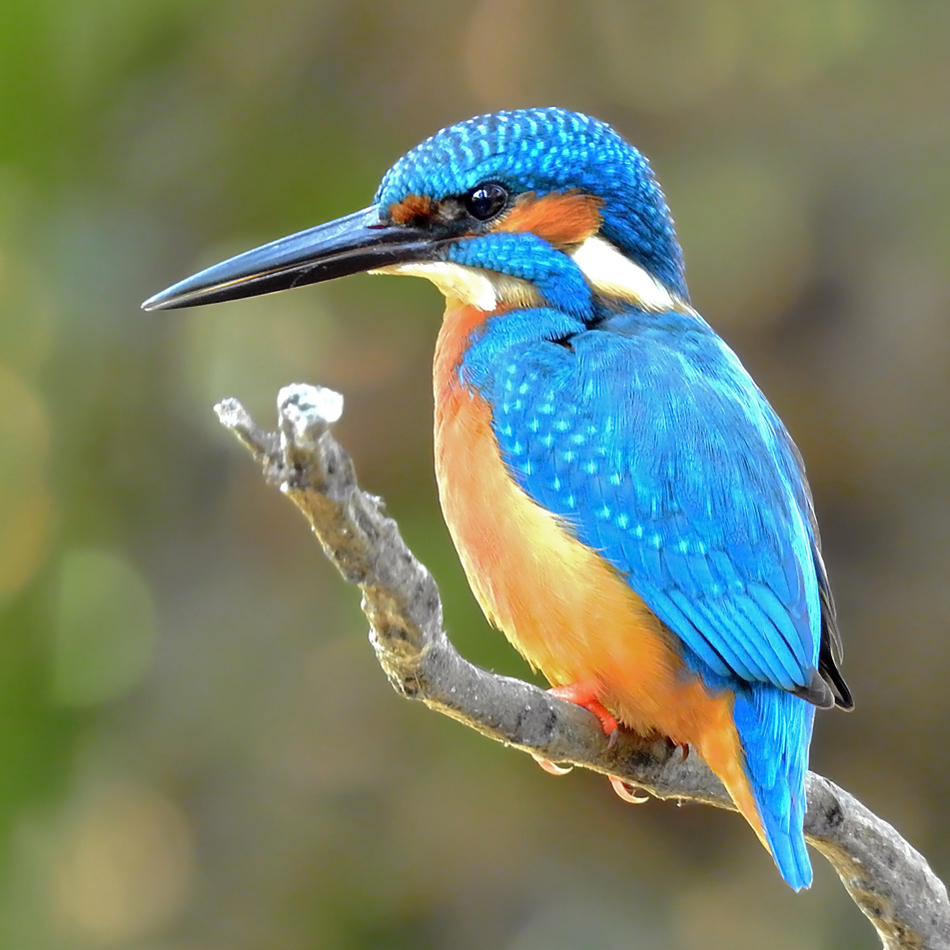 Japan produces some of the fastest and most efficient trains in the world with speeds over 300km/h. When the Shinkansen or bullet trains are traveling at high speeds and emerge from a tunnel, the trains produce a sonic boom. This created a huge source of noise pollution that annoyed local Japanese residents. The engineers on the project worked to find a solution and turned to an unlikely source, the Kingfisher bird. Due to their elongated beak, Kingfisher birds can travel between the air and water with very little splash while they are hunting for prey.
Japan produces some of the fastest and most efficient trains in the world with speeds over 300km/h. When the Shinkansen or bullet trains are traveling at high speeds and emerge from a tunnel, the trains produce a sonic boom. This created a huge source of noise pollution that annoyed local Japanese residents. The engineers on the project worked to find a solution and turned to an unlikely source, the Kingfisher bird. Due to their elongated beak, Kingfisher birds can travel between the air and water with very little splash while they are hunting for prey.
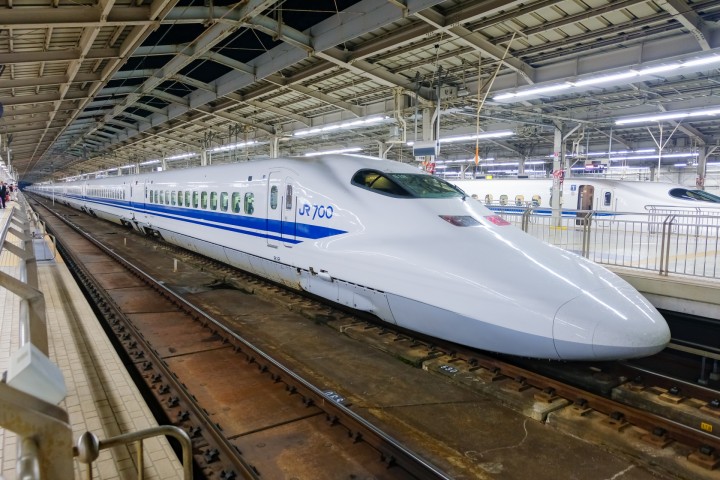 The engineers redesigned the train in the image of the Kingfisher and added a long beak-like shape to the front of the train. This very simple upgrade allowed the engineers to reduce the noise of the train, with the additional benefits of using 15% less electricity and traveling 10% faster than the original.
The engineers redesigned the train in the image of the Kingfisher and added a long beak-like shape to the front of the train. This very simple upgrade allowed the engineers to reduce the noise of the train, with the additional benefits of using 15% less electricity and traveling 10% faster than the original.
Skull-inspired high heels
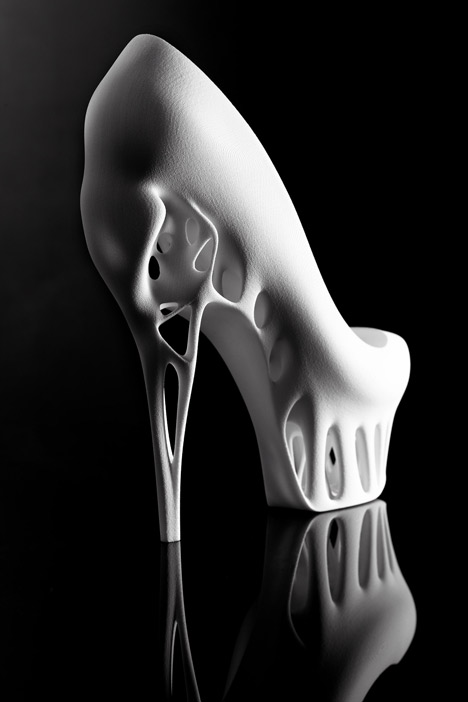
This biomimicry shoe is the result of a unique collaboration between Dutch fashion designer Marieka Ratsma and American architect Kostika Spaho. For this 3D-printed shoe, Ratsma and Spaho used the shape of a bird’s cranium for the front of the shoe, with the tapered beak as the spike of the heel. 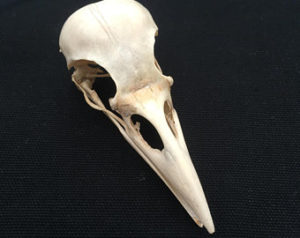 The shoe highlights the shape of the bird skull with its lightweight characteristics and highly differentiated bone structure within the cranium. This structure requires less 3D-printed material, which provides optimal efficiency, strength and elegance to the shoe. As you can see by the photo, nature was the key source of inspiration. I may not be sporting a pair of these anytime soon, but they are very artistic!
The shoe highlights the shape of the bird skull with its lightweight characteristics and highly differentiated bone structure within the cranium. This structure requires less 3D-printed material, which provides optimal efficiency, strength and elegance to the shoe. As you can see by the photo, nature was the key source of inspiration. I may not be sporting a pair of these anytime soon, but they are very artistic!
Caterpillar-inspired Robot
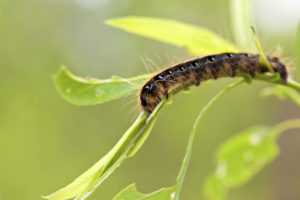 Insects have inspired many innovations for humans. This one is particularly interesting to me and has many potential applications. The video is about 10 years old and because I haven’t found any commercial uses to date, I am inclined to believe this rolling robot is being used for military applications. The robot is called GoQBot and mimics a caterpillar that reacts at lightning speed to an attacker. It quickly rolls up and rolls away from harm. The GoQBot is a silicone robot fitted with actuators made from shape-memory alloy coils that allow it to coil up and get moving in just 250 milliseconds and roll at a speed of 300 RPM! That is superfast for a rolling object! Initially, GoQBot’s potential applications were around debris fields where the robot could ‘wheel’ into dangerous areas instead of humans. If this thing rolled past me at warp speed, it would be enough to distract me from what I was doing, whether in battle or well, doing anything! Check out the video.
Insects have inspired many innovations for humans. This one is particularly interesting to me and has many potential applications. The video is about 10 years old and because I haven’t found any commercial uses to date, I am inclined to believe this rolling robot is being used for military applications. The robot is called GoQBot and mimics a caterpillar that reacts at lightning speed to an attacker. It quickly rolls up and rolls away from harm. The GoQBot is a silicone robot fitted with actuators made from shape-memory alloy coils that allow it to coil up and get moving in just 250 milliseconds and roll at a speed of 300 RPM! That is superfast for a rolling object! Initially, GoQBot’s potential applications were around debris fields where the robot could ‘wheel’ into dangerous areas instead of humans. If this thing rolled past me at warp speed, it would be enough to distract me from what I was doing, whether in battle or well, doing anything! Check out the video.
We all know many of the amazing things we see today came from some diligent research at our schools and universities from around the world. Let’s take a look at some examples that are currently in the works and what issues they are looking to solve by using biomimicry.
Leaf-inspired Coatings
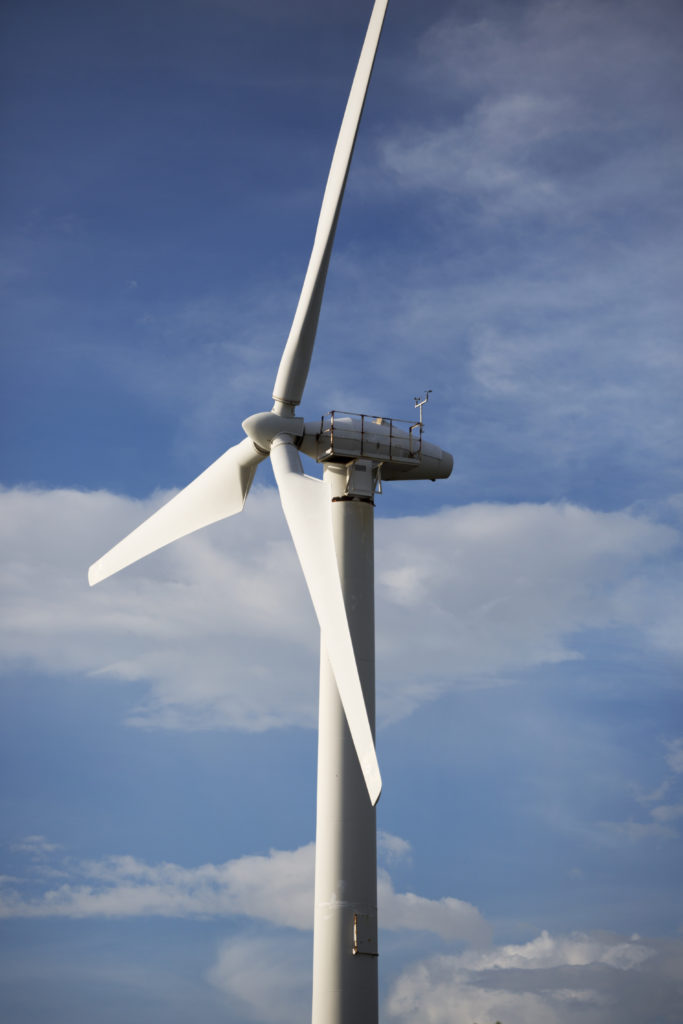 Of course, not all research is carried out at the university level. Take a look at what the winner of a middle school youth design challenge came up with to reduce the frost buildup on wind turbine blades and how they used biomimicry to develop the solution. Wind energy only accounts for 11% of renewable energy production because they’re not as reliable as fossil fuels. In the winter, frost can form on the wind turbine blades causing drag and reducing their efficiency. Icy weather also means that turbines must shut down to prevent damage. Reducing frost on wind turbine blades can increase their reliability and, in turn, expand the use of wind power.
Of course, not all research is carried out at the university level. Take a look at what the winner of a middle school youth design challenge came up with to reduce the frost buildup on wind turbine blades and how they used biomimicry to develop the solution. Wind energy only accounts for 11% of renewable energy production because they’re not as reliable as fossil fuels. In the winter, frost can form on the wind turbine blades causing drag and reducing their efficiency. Icy weather also means that turbines must shut down to prevent damage. Reducing frost on wind turbine blades can increase their reliability and, in turn, expand the use of wind power.
To solve this challenge, the students propose laser-engraving the blades of wind turbines as they come out of the factory and then coating them with a waxy, hydrophobic substance. This solution prevents frost from forming on the blades, allowing it to function and increases wind power during the winter. While this solution won’t be available for turbines that have already been made, it can have a substantial impact on future turbines as the number of wind turbines is expected to grow 13% by 2050.
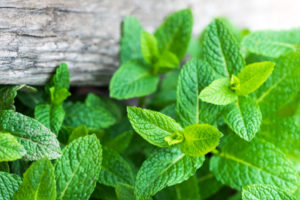 How was biomimicry used in this case? This solution was inspired by different plants such as mint and lotus. Mint prevents frost from forming due to the ridges on its leaves, and lotus plants have a bumpy surface with wax crystals that make it super hydrophobic. Through case studies and research, the students found that mint is one of the most efficient organisms to fight frost, while the lotus plant is efficient for getting rid of water. Inspired by this research and the functions of these two plants, the team used biomimicry to design a process to prevent wind turbines from frosting over. This easily beats any science project I presented in middle school.
How was biomimicry used in this case? This solution was inspired by different plants such as mint and lotus. Mint prevents frost from forming due to the ridges on its leaves, and lotus plants have a bumpy surface with wax crystals that make it super hydrophobic. Through case studies and research, the students found that mint is one of the most efficient organisms to fight frost, while the lotus plant is efficient for getting rid of water. Inspired by this research and the functions of these two plants, the team used biomimicry to design a process to prevent wind turbines from frosting over. This easily beats any science project I presented in middle school.
But wait, there are more middle school smarties that are looking to help humanity. I love that these young people are focusing their efforts on finding solutions to real problems. We saw that the students used more than one plant biomimicry to develop the solution to make the wind turbines frost free. This next group of students were motivated to protect people living in flood-prone areas, such as Taiwan.
Sea life-inspired dwellings
Floods in Taiwan have been extremely disruptive for both citizens and the environment. The devastation caused by the surges of water have injured and killed people, separated families, and washed away homes. The students chose to dedicate this project to explore solutions to how this problem can be solved.
They came up with a solution called the ‘Teardrop Residence’. The objective of the bio-inspired shelter is to float whenever the area floods. When water overflows and comes into the region, the Teardrop home will stay on the surface of the water, where residents can safely enter and leave their house. Chains would prevent the structure from floating away, and extendable pipes enable the residents to use water in the house. This solution solves the problem the team selected due to how the durability, functions, and hydrodynamic features of the building allow it to withstand even the longest floods, protecting the residents living within the flood zones of Taiwan.
 How did they leverage biomimicry? The pointed shape of the home mimics the hydrodynamic features of the swordfish to resist damage from flood surges. Coatings inspired by box-patterned geckos protect it from water, and tethers inspired by sea otters keep the shelters from floating away. The tethers are designed to anchor down the house similar to the way otters hold onto kelp to prevent themselves from floating away, while the chains between the houses imitate the otters’ action of holding hands while they sleep. Beaver-inspired insulation would further help regulate temperature in the structure. It is impressive the way they used the attributes of several sea creatures and combined them to develop their Teardrop houses. I feel better about the state of the world with these smart students working on solutions for our people and the planet.
How did they leverage biomimicry? The pointed shape of the home mimics the hydrodynamic features of the swordfish to resist damage from flood surges. Coatings inspired by box-patterned geckos protect it from water, and tethers inspired by sea otters keep the shelters from floating away. The tethers are designed to anchor down the house similar to the way otters hold onto kelp to prevent themselves from floating away, while the chains between the houses imitate the otters’ action of holding hands while they sleep. Beaver-inspired insulation would further help regulate temperature in the structure. It is impressive the way they used the attributes of several sea creatures and combined them to develop their Teardrop houses. I feel better about the state of the world with these smart students working on solutions for our people and the planet.
OK, one more from the middle school design challenge.
Bees, Sea Cucumbers and Crabs, Oh My!
One team addressed black carbon emissions or soot from wood stoves that contributes to climate change. Dark particles on snow and ice absorb heat, expediting melting and releasing greenhouse gases like methane from ice. Black carbon is a short-lived pollutant; reducing emissions will have an immediate positive impact on climate.
The design of the carbon collection device that the team came up with can be inserted into existing wood stove pipes. When the black carbon particles are released from burning wood, they are captured by the filter in the stove pipe before heading into the atmosphere. Once the carbon is captured, the mechanism is removed, cleaned, and the carbon is contained by composting.
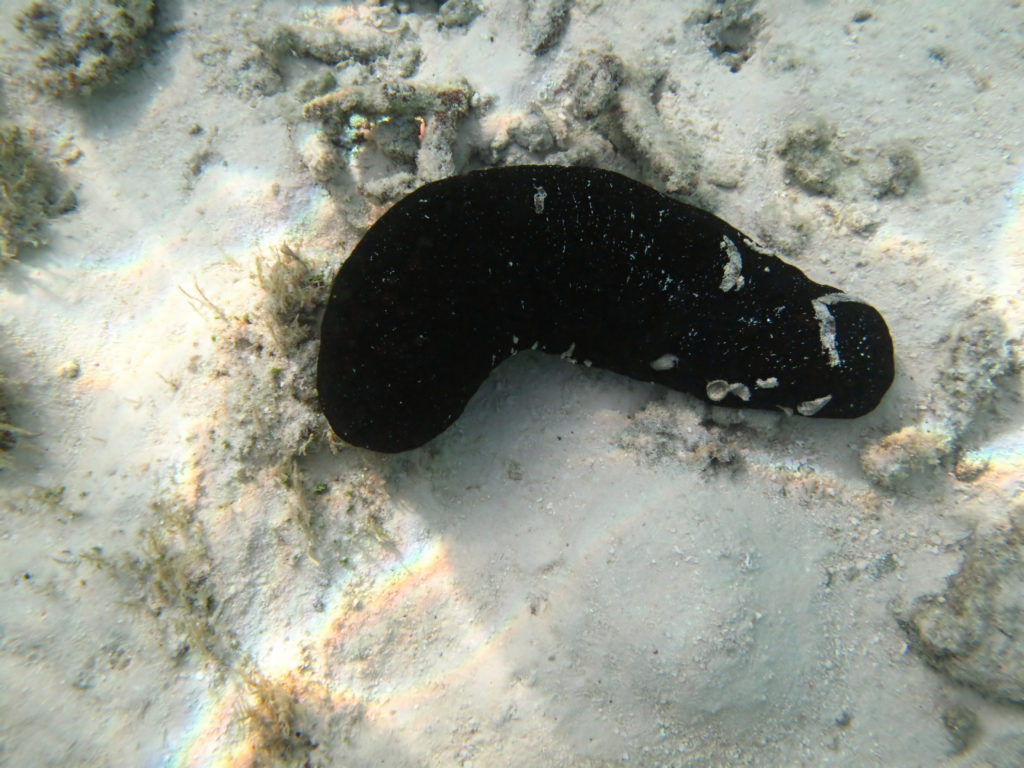 The biomimicry that was used models bees, sea cucumbers and fiddler crabs. A positive electrical charge on bees’ hairs, created when flying, attracts negatively charged pollen. The design actually spins and creates a positive charge to attract negatively-charged black carbon. The fiddler crab uses three separate mouthparts covered in setae – stiff, brush-like, feathery, and spoon-shaped hairs that collect bacteria. The design uses different shapes and sizes of structures to collect black carbon and copies the stiff, feathery bristles, and spoons of setae. Sea cucumbers’ mucus attracts food particles. The result is a prototype device that fits into existing stove pipes and captures black carbon particles via a combination of electrostatic attraction inspired by bees’ hair, the hair-like mechanisms of fiddler crab setae, and a sticky substance inspired by sea cucumbers.
The biomimicry that was used models bees, sea cucumbers and fiddler crabs. A positive electrical charge on bees’ hairs, created when flying, attracts negatively charged pollen. The design actually spins and creates a positive charge to attract negatively-charged black carbon. The fiddler crab uses three separate mouthparts covered in setae – stiff, brush-like, feathery, and spoon-shaped hairs that collect bacteria. The design uses different shapes and sizes of structures to collect black carbon and copies the stiff, feathery bristles, and spoons of setae. Sea cucumbers’ mucus attracts food particles. The result is a prototype device that fits into existing stove pipes and captures black carbon particles via a combination of electrostatic attraction inspired by bees’ hair, the hair-like mechanisms of fiddler crab setae, and a sticky substance inspired by sea cucumbers.
 There are many samples of biomimicry and students from middle school to universities and corporations are making discoveries that are helping develop solutions that are advantageous to humans and the planet. This information provides a good set up for Part 2 of this blog where I review some of the discoveries that we are making by combining biomimicry and artificial intelligence. The wide use of biomimicry illustrates how amazing nature is. If we take the time to understand nature, we can be more closely integrated into its ecosystem.
There are many samples of biomimicry and students from middle school to universities and corporations are making discoveries that are helping develop solutions that are advantageous to humans and the planet. This information provides a good set up for Part 2 of this blog where I review some of the discoveries that we are making by combining biomimicry and artificial intelligence. The wide use of biomimicry illustrates how amazing nature is. If we take the time to understand nature, we can be more closely integrated into its ecosystem.